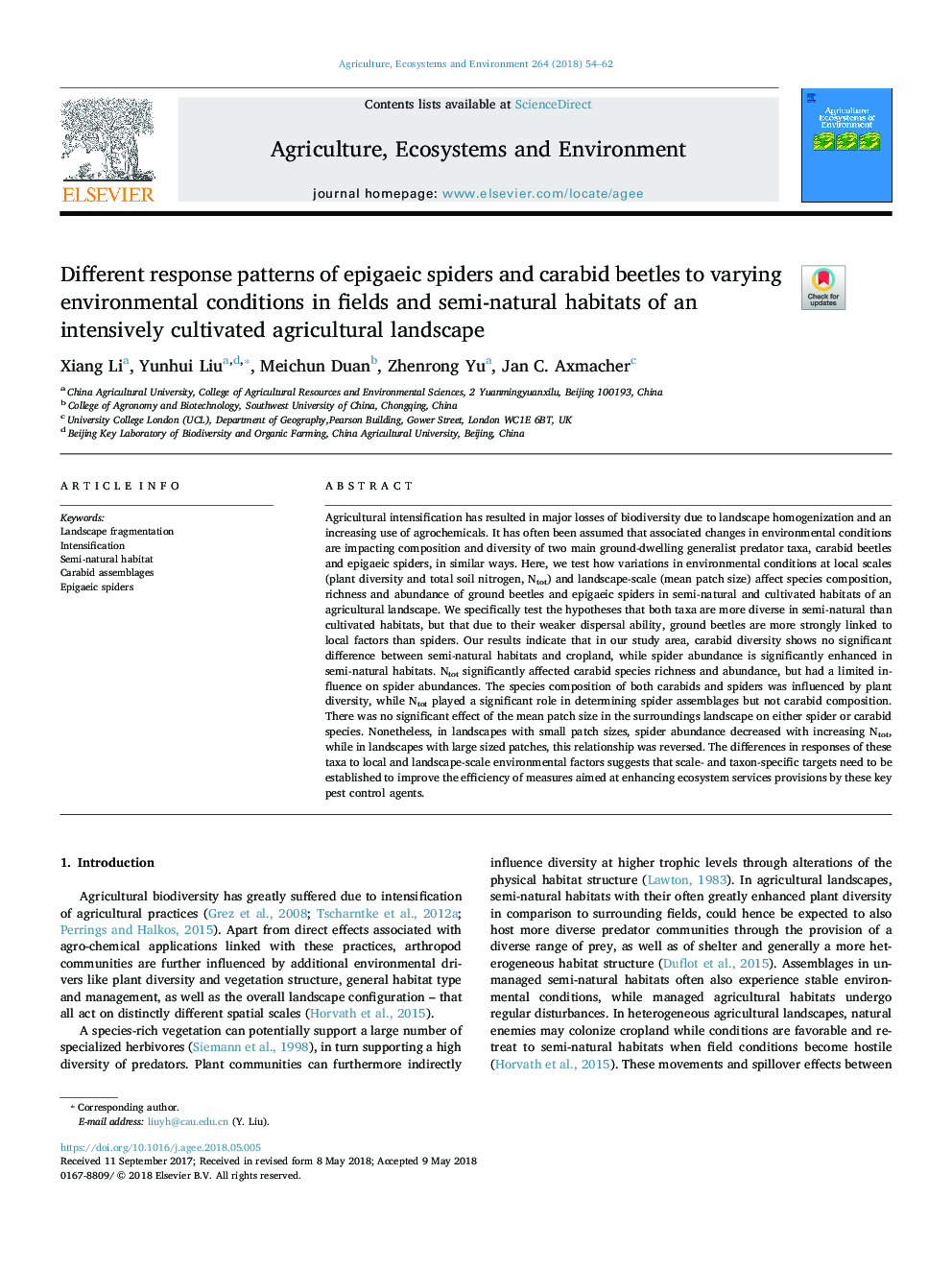| Article ID | Journal | Published Year | Pages | File Type |
|---|---|---|---|---|
| 8487023 | Agriculture, Ecosystems & Environment | 2018 | 9 Pages |
Abstract
Agricultural intensification has resulted in major losses of biodiversity due to landscape homogenization and an increasing use of agrochemicals. It has often been assumed that associated changes in environmental conditions are impacting composition and diversity of two main ground-dwelling generalist predator taxa, carabid beetles and epigaeic spiders, in similar ways. Here, we test how variations in environmental conditions at local scales (plant diversity and total soil nitrogen, Ntot) and landscape-scale (mean patch size) affect species composition, richness and abundance of ground beetles and epigaeic spiders in semi-natural and cultivated habitats of an agricultural landscape. We specifically test the hypotheses that both taxa are more diverse in semi-natural than cultivated habitats, but that due to their weaker dispersal ability, ground beetles are more strongly linked to local factors than spiders. Our results indicate that in our study area, carabid diversity shows no significant difference between semi-natural habitats and cropland, while spider abundance is significantly enhanced in semi-natural habitats. Ntot significantly affected carabid species richness and abundance, but had a limited influence on spider abundances. The species composition of both carabids and spiders was influenced by plant diversity, while Ntot played a significant role in determining spider assemblages but not carabid composition. There was no significant effect of the mean patch size in the surroundings landscape on either spider or carabid species. Nonetheless, in landscapes with small patch sizes, spider abundance decreased with increasing Ntot, while in landscapes with large sized patches, this relationship was reversed. The differences in responses of these taxa to local and landscape-scale environmental factors suggests that scale- and taxon-specific targets need to be established to improve the efficiency of measures aimed at enhancing ecosystem services provisions by these key pest control agents.
Related Topics
Life Sciences
Agricultural and Biological Sciences
Agronomy and Crop Science
Authors
Xiang Li, Yunhui Liu, Meichun Duan, Zhenrong Yu, Jan C. Axmacher,
